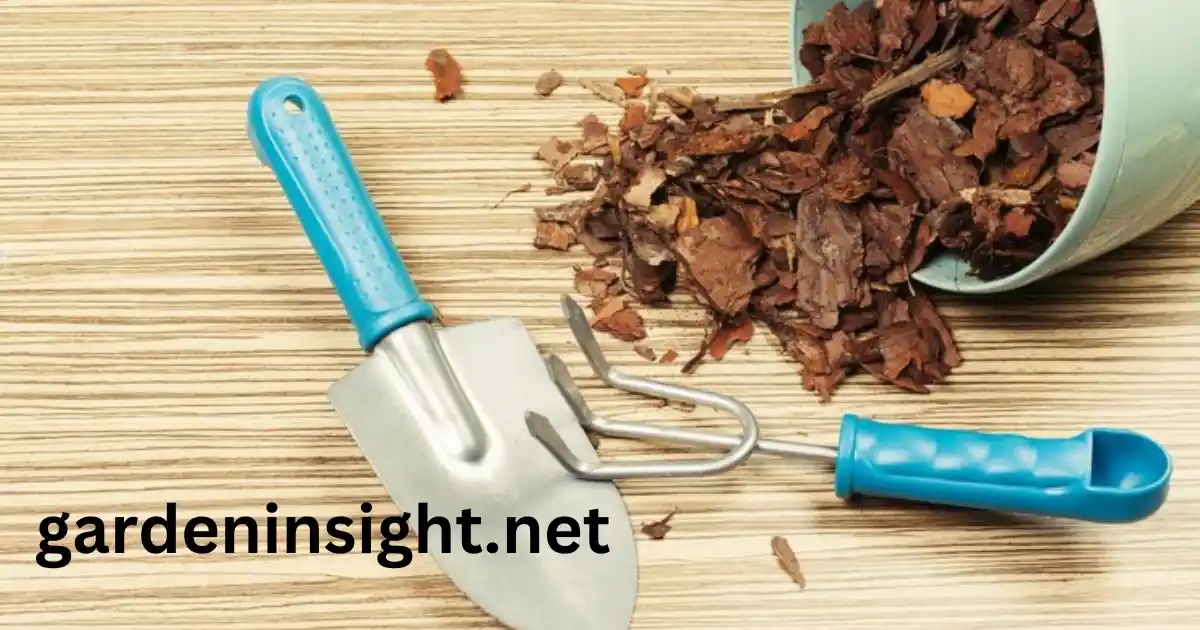Mulch is a gardener’s best friend. It’s like a cozy blanket for your soil, helping your plants thrive while reducing your workload. This comprehensive guide will teach you everything you need to know about gardening with mulch, from choosing the right type to applying it effectively.
What is Mulch?
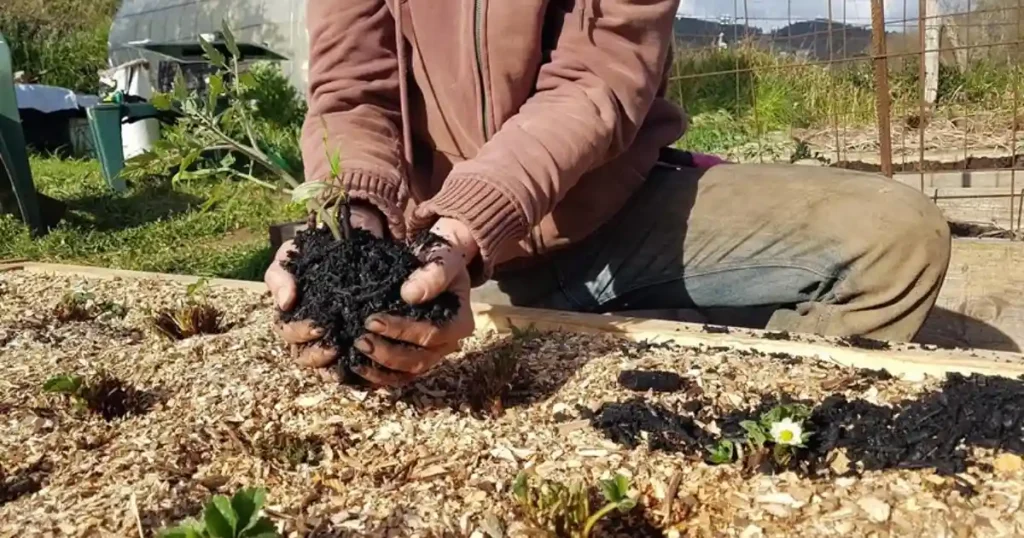
Mulch is any material spread over the soil’s surface. It can be organic (like bark chips or leaves) or inorganic (like stones or plastic).
Why Use Mulch in Your Garden?
Mulch offers many benefits for your garden:
- Moisture Retention: Mulch acts like a sponge, holding in moisture and reducing the need for frequent watering.
- Weed Suppression: A good layer of mulch prevents weed seeds from germinating, saving you time and effort.
- Temperature Regulation: Mulch keeps the soil cool in summer and warm in winter, protecting plant roots from extreme temperatures.
- Soil Improvement: As organic mulch breaks down, it adds nutrients to the soil and improves its structure.
- Erosion Control: Mulch helps to prevent soil erosion from wind and rain.
- Aesthetics: Mulch gives your garden a neat and tidy appearance.
Garden with Mulch: Best Choice of Mulch
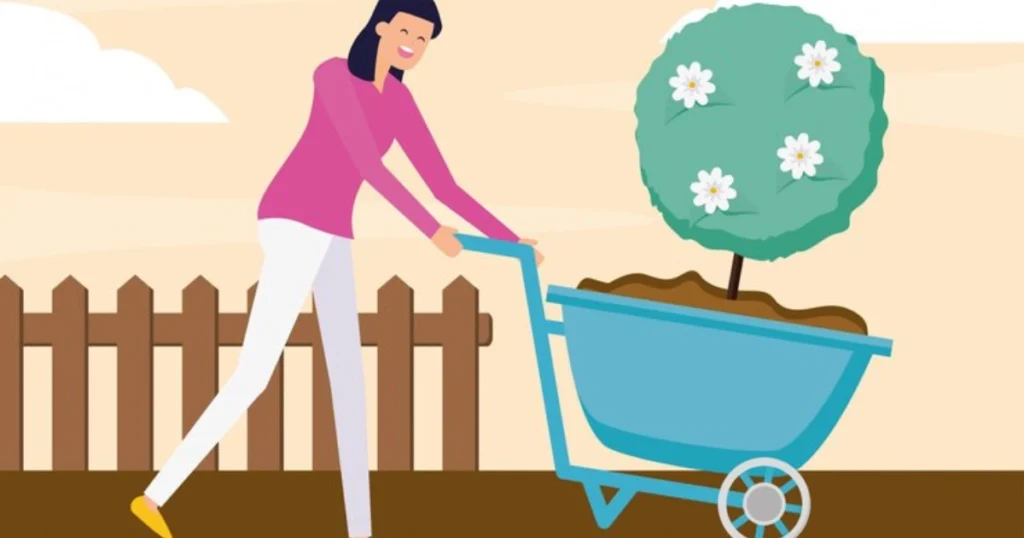
The best type of mulch for your garden depends on your needs and preferences. Here are some popular options:
| Type of Mulch | Organic/Inorganic | Best Used For | Examples |
|---|---|---|---|
| Organic Mulch | Organic | Improving soil quality | Straw, leaves, wood chips |
| Inorganic Mulch | Inorganic | Long-term weed suppression | Plastic sheets, gravel |
| Living Mulch | Organic | Cover crops and soil enrichment | Clover, ryegrass |
How to Apply Mulch
The application of mulch onto garden is decisive step for you garden growth, so take it with care.
Garden With Mulch: Application time
You can apply mulch almost any time of year. However, spring and fall are generally the best times.
- Spring: Apply mulch after the soil has warmed up to help retain moisture and suppress weeds during the growing season.
- Fall: Apply mulch before the ground freezes to protect plant roots from winter’s cold temperatures.
Garden With Mulch: How To Lay It Down
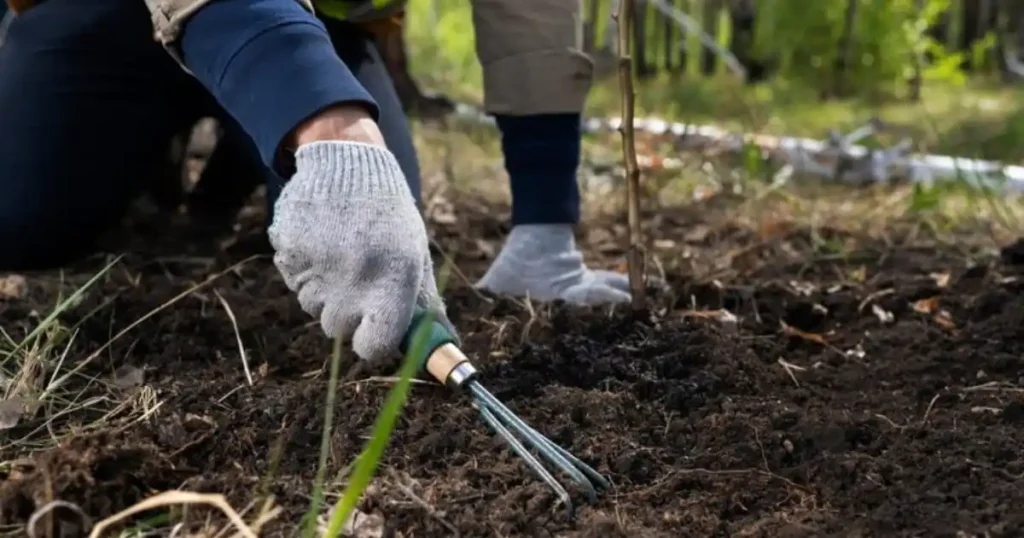
- Prepare the Area: Remove any existing weeds and debris.
- Water the Soil: Moisten the soil before applying mulch.
- Apply the Mulch: Spread the mulch evenly around plants, keeping it a few inches away from stems to prevent rot.
- Maintain the Mulch: Replenish the mulch as needed, especially after heavy rains or as it decomposes.
How Thick Should Mulch be Spread in a Garden?
The ideal mulch depth depends on the type of mulch and your garden’s needs. Generally, aim for a layer of 2-4 inches.
| Mulch Type | Recommended Depth |
|---|---|
| Wood Chips/Bark | 2-4 inches |
| Shredded Leaves | 3-4 inches |
| Grass Clippings | 1-2 inches |
| Straw | 4-6 inches |
| Compost | 1-2 inches |
| Pine Needles | 2-3 inches |
| Cocoa Bean Hulls | 1-2 inches |
| Stone or Gravel | 2-3 inches |
Tips for Using Mulch
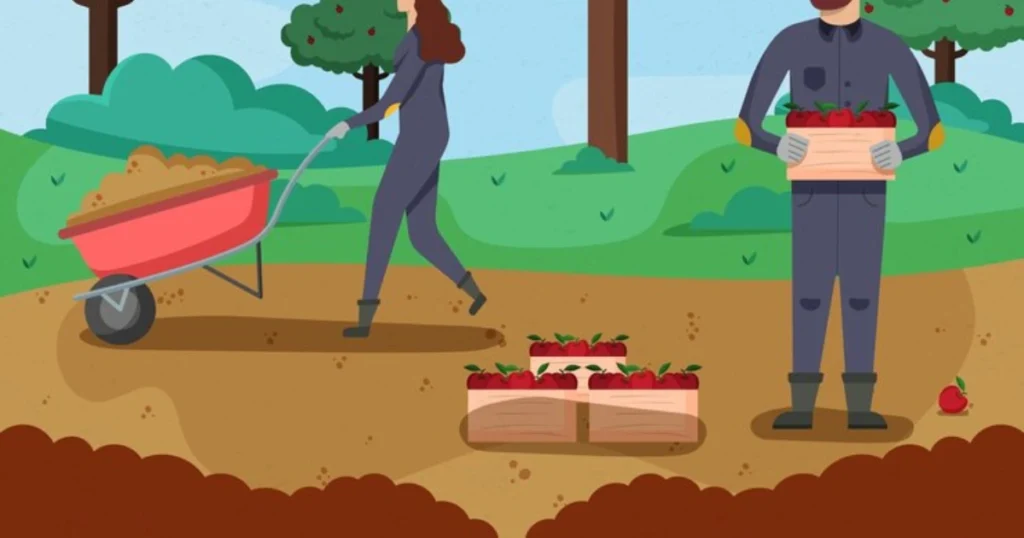
- Keep Mulch Away from Plant Stems: This prevents rot and allows for proper air circulation.
- Water Deeply: Mulch can make it harder for water to penetrate the soil, so ensure you water deeply when needed.
- Refresh Mulch Regularly: Replenish mulch as it decomposes or gets displaced.
- Use the Right Mulch for the Right Plants: Some plants prefer specific types of mulch. For example, acid-loving plants like pine needles.
Garden With Mulch: Choose Straw Mulch
Straw is an excellent mulch for vegetable gardens. It’s lightweight, affordable, and helps keep fruits and vegetables clean. Apply a 4-6 inch layer of straw around your plants, leaving some space around the stems.
Garden With Mulch: Choose Leaves Mulch
Leaves are a free and effective mulch option. Shred them first to prevent them from matting down. Apply a 3-4 inch layer around your plants.
Garden With Mulch: Choose Plastic Mulch
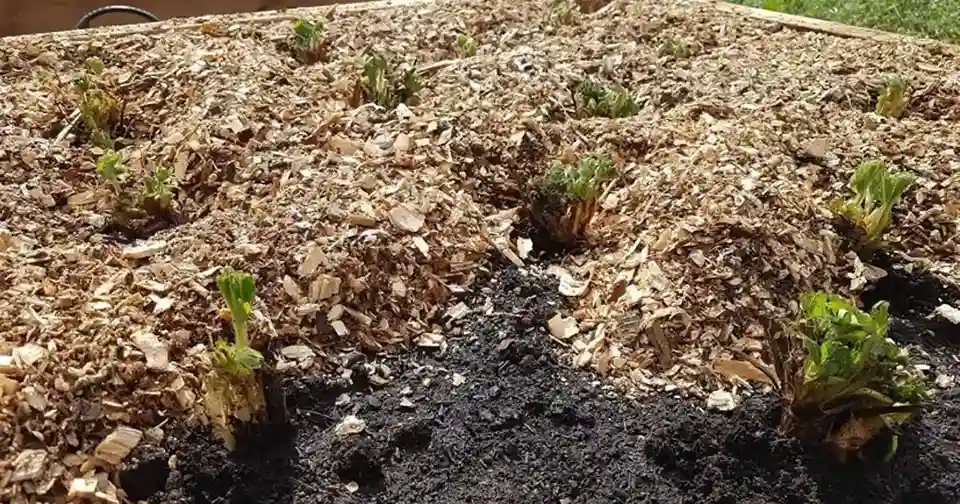
To garden with mulch (plastic in nature) is often used in vegetable gardens to warm the soil and suppress weeds.
However, it can prevent water from penetrating the soil and may need to be removed at the end of the growing season.
Gardening Without Mulch
While mulch offers numerous benefits, you can still garden without it. Here are some alternatives:
- Hand Weeding: Regularly remove weeds by hand or with tools.
- Hoe or Cultivate: Use a hoe or cultivator to disturb the soil surface and prevent weed growth.
- Ground Covers: Plant ground cover plants to outcompete weeds.
- Plastic Sheeting: Use black plastic sheeting to suppress weeds, but be aware it can also heat up the soil.
Conclusion
Enduring experience to garden with mulch is a valuable practice for enhancing soil quality, conserving water, and reducing weed growth.
By understanding the different types of mulch and their uses, you can create a thriving garden that meets your needs. Whether you prefer organic options like straw and leaves or inorganic materials like plastic mulch, the key is to apply and maintain mulch effectively.
Use this guide to make informed decisions and enjoy the benefits of a healthier and booming garden with mulch. Happy gardening!
FAQs: How to Garden with Mulch
Here are answers to some frequently asked questions about using mulch in your garden:
What types of mulch are best for gardens?
Organic mulch like straw, leaves, and wood chips is ideal for enriching the soil. Inorganic options, such as plastic mulch, are suitable for weed control.
How does mulch help plants grow?
Mulch conserves soil moisture, regulates temperature, and prevents weed growth, creating a better environment for plants to thrive.
When is the best time to apply mulch?
Early spring and late fall are ideal times for mulching, depending on your gardening goals and climate.
How thick should mulch be spread in a garden?
A layer of 2-4 inches is recommended for most gardens. Too much mulch can suffocate plants, while too little may not be effective.
Can mulch attract pests to your garden?
Yes, but proper maintenance, such as keeping mulch away from plant stems, can reduce the likelihood of pests becoming an issue.
